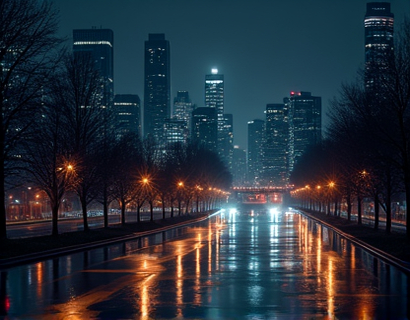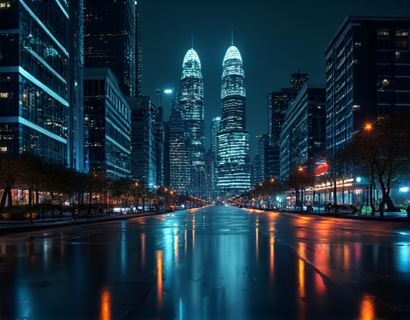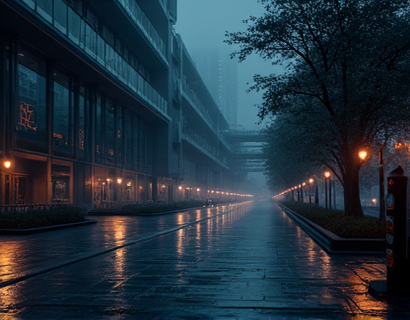Ultimate Explorer's Guide to the Indus Valley's Cultural Heritage and Historical Sites
Embark on an extraordinary exploration of the ancient Indus Valley, a cradle of civilization that flourished over five thousand years ago. This ultimate guide offers travelers deep insight into the region’s rich cultural heritage and historical sites, providing a wealth of local perspectives and practical tips to make your journey both enriching and seamless. From monumental urban centers known for groundbreaking engineering feats to overlooked ruins nestled in remote desert landscapes, this comprehensive resource will prepare you for an unforgettable voyage through a land where history remains vividly alive. Every section is designed to equip cultural enthusiasts, academic scholars, and curious adventurers with the knowledge required to fully appreciate the legacy and ongoing story of one of humanity’s earliest societies.
Understanding the Indus Valley Civilization
Origins and Timeline
The Indus Valley Civilization, also known as the Harappan Civilization, emerged around 3300 BCE in the fertile floodplains of the Indus River and its tributaries. It developed over several phases beginning with the Early Harappan (3300–2600 BCE), transitioning to the mature urban phase (2600–1900 BCE), and concluding with the late Harappan (1900–1300 BCE) period marked by regional diversity and gradual decentralization. This civilization extended across more than a million square kilometers, spanning modern-day Pakistan, northwest India, and parts of Afghanistan and Iran. Such widespread distribution reveals not only a vast cultural footprint but also sophisticated communication networks enabled by riverine and overland trade routes that fostered economic and artistic exchanges.
Key Characteristics and Innovations
Urban planning in the Indus Valley displays an unprecedented level of standardization and civic organization. Archaeological remains show that city blocks were laid out in regular grids, with parallel streets intersecting at right angles. Fired bricks of uniform dimensions facilitated quick and cohesive construction. Advanced drainage and sewage systems ran beneath streets, carrying wastewater away from residential areas into covered drains. Public structures such as granaries and the Great Bath at Mohenjo-daro highlight the emphasis placed on communal welfare and ritual practices. Water management through wells and reservoirs underlines a deep understanding of hydraulic engineering that supported both large populations and agricultural production in regions subject to seasonal flooding.
Cultural Heritage of the Indus Valley
Architecture and Urban Planning
Architecture in the Indus Valley blends form and functionality. Housing structures often comprised multiple rooms organized around courtyards, which provided ventilation, natural light, and a central gathering space. Rooftops doubled as workspaces or sleeping areas during hot nights. Public buildings like the Great Granary of Harappa featured massive storage compartments with ventilation channels, suggesting sophisticated knowledge of preserving grain. Throughout the region, gateways flanked fortified citadels, signaling an administrative role. Terracotta seals engraved with animal figures and dynastic symbols were likely used to mark property or goods, indicating regulated trade and governance within these meticulously planned urban environments.
Art and Craftsmanship
Indus Valley artisans excelled in diverse crafts, producing distinctive pottery, metalwork, and bead jewelry that reveal both aesthetic sensibilities and technical expertise. Pottery styles ranged from utilitarian coarse wares to finely polished vessels painted with red slip and intricate motifs. Metalworkers cast bronze tools and ornaments, and copper chisels found at various sites testify to advanced metallurgy. Beadmakers specialized in carnelian and agate, skillfully drilling small perforations with astonishing precision to create necklaces, bracelets, and frequently traded luxury goods. The recurring depiction of mythical creatures and geometric patterns on seals hints at symbolic or religious significance, demonstrating the intersection of artistic innovation with cultural beliefs.
Language and Script
The Indus script, consisting of hundreds of distinct signs, appears on seals, tablets, and pottery. Short sequences of five to six symbols suggest a structured writing system, yet its brevity and the absence of bilingual texts have prevented conclusive decipherment. Scholars have proposed links to Dravidian or Indo-European language families, but no theory has gained universal acceptance. Ongoing research involving computational analysis and comparative epigraphy seeks to unravel this enigma. Even without full translation, the script stands as a testament to administrative complexity and the spread of literacy among merchant classes and bureaucrats in urban centers across the Indus plain.
Major Historical Sites to Explore
- Mohenjo-daro
- Harappa
- Dholavira
- Rakhigarhi
- Ganweriwala
- Kalibangan
Mohenjo-daro
Mohenjo-daro, located in present-day Sindh province of Pakistan, represents the zenith of urban planning and civic infrastructure during the mature Harappan phase. Discovered in the 1920s by Sir John Marshall, this UNESCO World Heritage Site features the iconic Great Bath—a massive waterproof basin surrounded by tiered steps believed to serve ritualistic functions. Excavations have uncovered over 700 houses, each with private bathrooms connected to covered drains. Museums on site display thousands of artifacts including bronze statuettes, painted pottery, and finely carved seals. Seasonal flooding from the Indus has posed preservation challenges, prompting ongoing conservation efforts. Viewing the canal networks, dockyards, and wide main thoroughfares transports visitors back to a thriving metropolis where commerce and daily life blended seamlessly.
Harappa
Harappa lies near modern Sahiwal in Punjab, Pakistan, and was the first Indus site to be excavated—its name now synonymous with the entire civilization. The site museum exhibits an impressive array of steatite seals bearing inscriptions and animal motifs, terracotta figurines depicting mother goddesses and dancing women, and standardized weights used by merchants. Extensive granaries with alternating walls and storage bins offer insights into large-scale grain management. Archaeologists have also uncovered evidence of standardized mudbrick construction and elite residences with adjoining workshops. A guided walk along the raised platform of the citadel area reveals the strategic placement of administrative and religious structures, hinting at the city’s role as a political and religious hub.
Dholavira
In India’s arid Gujarat region, Dholavira stands out for its unparalleled water management system. Excavations have revealed a network of fifteen reservoirs, carefully engineered to capture monsoon rains and store water throughout the year. The city’s layout comprises a fortified citadel, a middle town where administrative activities likely took place, and a lower town for residential neighborhoods and craft workshops. Limestone and gypsum signboards bearing Indus script reveal public messaging systems. Stone platforms and staircases underscore the civic pride and architectural sophistication of its inhabitants. A small archaeological museum adjacent to the ruins displays objects such as shell bangles, pottery painted with fish and pipal leaf motifs, and copper tools that chronicle daily life in this remote but technologically advanced settlement.
Rakhigarhi
Rakhigarhi, one of the largest Harappan sites in India’s Haryana state, has recently gained acclaim for providing new insights into genetic lineage and urban transitions. Excavations have unearthed two distinct occupation layers indicating early and mature Harappan phases. Finds include bone tools, bronze implements, and terracotta pottery painted with herringbone designs. Human remains recovered from burials are now central to studies examining ancestral connections between ancient populations and contemporary South Asians. Plans for an on-site museum aim to share these findings with visitors, highlighting the dynamic nature of archaeological research and the evolving narrative of the Indus Valley’s origins and decline.
Ganweriwala
Hidden amidst the shifting sands of the Cholistan Desert in Pakistan, Ganweriwala remains a relatively unexplored gem of the mature Harappan period. Satellite imagery and preliminary surveys reveal city walls reaching over seven kilometers in circumference, residential quarters, and an extensive drainage network similar to that at Mohenjo-daro. The desert’s harsh climate has preserved subsurface brick structures, but their remote location and lack of water supply have hindered large-scale excavations. Scholars believe further exploration could shed light on trade routes that connected inland agricultural producers to coastal and riverine markets, offering new perspectives on the regional economy and social organization of late Harappan communities.
Kalibangan
Situated along the Ghaggar River in Rajasthan, India, Kalibangan provides a rare glimpse into early Harappan agricultural practices. Archaeologists uncovered plowed fields organized in furrows and ridges, representing some of the earliest evidence of systematic farming. Hearth ovens suggest domesticated crops and food processing techniques, while distinctive black-on-red pottery and terracotta animal figurines illustrate ritual activities and aesthetic values. The discovery of a pottery workshop and pits for dyeing textiles indicates a vibrant craft industry. Unique burial practices with headless skeletons and unusual orientation speak to localized cultural customs during the transition from rural settlements to urban centers.
Practical Travel Tips for Visiting the Indus Valley Region
- Best Time to Visit
- Local Transportation
- Accommodation Options
- Guided Tours vs Self-Exploration
- Language and Communication
- Safety and Health Considerations
- Permits and Regulations
- Respecting Cultural Norms
- Currency Exchange and Banking
- Photography and Drone Guidelines
Best Time to Visit
The prime travel season for exploring Indus Valley heritage spans from October to March, when mild temperatures and clear skies prevail. Daytime highs range between 15 and 25 degrees Celsius, making site visits and outdoor activities comfortable. Monsoon rains from July to September can cause flooding and disrupt transport, while summer temperatures may exceed 45 degrees Celsius in desert regions. Winter months bring chilly nights, so pack layers. Early autumn and late spring offer transitional weather but require monitoring local forecasts for sudden temperature swings.
Local Transportation
Major urban centers such as Karachi, Lahore, Delhi, and Ahmedabad serve as entry points via international airports. From there, travellers can connect to regional sites by train, bus, or private car. Trains offer scenic journeys through rural landscapes but can be slower and less flexible than road travel. Buses operated by state and private companies are economical but may become overcrowded. Hiring a private driver enables access to remote locations and hidden sites not served by public transport. When traveling across borders, ensure visas and travel documents are in order and verify any restrictions on archaeological zones.
Accommodation Options
Accommodation around Indus Valley sites ranges from luxury heritage hotels and boutique guesthouses to basic lodges and homestays. In regional capitals, modern amenities include Wi-Fi, air-conditioning, and international cuisine. Closer to excavation areas, expect simpler facilities such as shared bathrooms and limited electricity. Advance reservations during peak season are advisable, especially for archaeological conferences and cultural festivals. Homestays and community-run guesthouses offer immersive experiences and direct support to local economies. Participating in cooking classes and traditional craft workshops through your host can deepen cultural understanding.
Guided Tours vs Self-Exploration
Guided tours led by qualified archaeologists or experienced local guides lend context to complex ruins, enhancing appreciation of urban layouts and artifact significance. Many operators design multi-day itineraries that combine major sites with visits to lesser-known locations, local villages, and cultural performances. Independent travelers benefit from flexible pacing and spontaneous discoveries but should invest in detailed guidebooks, maps, and mobile apps. Hiring knowledgeable guides at individual sites can strike a balance, ensuring you uncover hidden features and understand interpretive signage while retaining freedom to explore.
Language and Communication
Regional languages include Urdu, Punjabi, Sindhi in Pakistan, and Hindi, Punjabi, Gujarati, Rajasthani dialects in India. English is widely spoken in urban areas, tourist facilities, and by heritage professionals. Learning basic greetings, directions, and hospitality phrases in local languages fosters goodwill and enriches interactions. Download offline language apps and carry small phrasebooks for rural visits. Smiling and polite gestures cross cultural boundaries, helping you connect with hosts, artisans, and fellow travelers.
Safety and Health Considerations
Stay informed of travel advisories and local security updates before heading to border areas or underdeveloped regions. Register with your embassy or consulate if required. Carry a first aid kit with bandages, antiseptics, antidiarrheal medication, and prescriptions. Bottled or purified water is essential in arid climates; avoid ice and untreated tap water. Wear sun protection, breathable clothing, and sturdy walking shoes. Obtain travel insurance covering medical emergencies and trip cancellations. Inform local contacts of your itinerary and expected return times when venturing into desert or forested zones.
Permits and Regulations
Certain archaeological sites require entry tickets, photography permits, or permission from the archaeological department. Fees vary for domestic and international visitors and may be payable in cash only. Drone photography is typically restricted; apply for special permissions well in advance if desired. Adhere to guidelines prohibiting touching or removing artifacts. Some excavation zones close during active research campaigns, so consult official schedules before planning visits.
Respecting Cultural Norms
Cultural etiquette and religious customs differ regionally. Dress modestly in conservative areas and cover shoulders and knees when entering temples, mosques, or private homes. Always ask before photographing individuals, especially women and religious ceremonies. Remove footwear at sacred sites. Greet hosts with a slight bow or a verbal greeting and accept refreshments like tea or fruit with your right hand. Tipping guides, drivers, and service staff is appreciated but should reflect local standards of two to five percent.
Currency Exchange and Banking
Local currency can be obtained at airports, banks, and authorized exchange centers. ATMs are common in cities but scarce in remote areas, so carry sufficient cash for entry fees and transport. Credit cards are accepted in upscale hotels and restaurants but not at smaller markets and roadside stalls. Always keep small denominations for tipping and minor purchases, and avoid exchanging money on the street. Keep digital copies of important documents and bank contact numbers in case you lose your wallet.
Photography and Drone Guidelines
Photography is generally allowed at open-air ruins, but flash may be prohibited within enclosed structures to protect ancient paintings. Seek permission before using professional equipment or drones, and respect restricted zones demarcated by guards. Capturing details of seals, pottery shards, and architectural elements can aid academic research and personal records, but always prioritize preservation over the perfect shot by maintaining a safe distance to avoid unintentional damage.
Hidden Gems and Local Attractions Off the Beaten Path
- Regional Museums and Cultural Centers
- Nearby Villages and Artisan Workshops
- Natural Landmarks and Scenic Spots
- Local Markets and Culinary Experiences
- Festivals and Events Celebrating Heritage
- Folk Music and Dance Performances
Regional Museums and Cultural Centers
Beyond major city museums, regional cultural centers preserve artifacts and share local histories often overlooked in mainstream narratives. The Regional Archaeological Museum in Sahiwal focuses on Harappa and showcases rare jade beads, copper implements, and terracotta female figures. In Ahmedabad, the Calico Museum of Textiles emphasizes traditional weaving techniques that evolved from ancient trade routes. Small community centers host lectures, film screenings, and interactive displays, granting deeper insight into the living heritage and contemporary relevance of the Indus Valley legacy.
Nearby Villages and Artisan Workshops
Rural communities surrounding Indus sites specialize in crafts directly linked to ancient traditions. In Punjab villages, potters use time-honored wheel-throwing methods to produce clay pitchers and lamps reminiscent of Harappan ceramics. Beadmakers in Sindh fashion vibrant glass beads using techniques derived from carnelian workshops dating back thousands of years. Leather craftsmen create intricately tooled bags and sandals, while woodcarvers in Rajasthan hew elaborate door frames echoing geometric patterns found on seals. Visiting these workshops fosters cross-cultural exchange and allows for the purchase of authentic souvenirs that sustain local livelihoods.
Natural Landmarks and Scenic Spots
The Indus Valley region’s ecology ranges from desert landscapes to riverine forests. The Cholistan Desert features shifting dunes, fossilized lakes, and small wildlife sanctuaries home to chinkara deer and desert foxes. The Hakra riverbed area reveals seasonal water channels and submerged settlements visible after monsoon rains. South of Karachi, the Kirthar National Park encompasses rugged hills and grasslands inhabited by Sindh ibex and nilgai antelopes. Observing sunrise over ancient mounds or stargazing in minimal light pollution conditions adds a profound dimension to archaeological exploration.
Local Markets and Culinary Experiences
Exploring bazaars in Lahori, Karachi, or Delhi introduces travelers to vibrant street food cultures that have absorbed millennia of culinary evolution. Savor snacks like spicy chickpea patties, regional breads such as bajra roti and kulcha, and signature meat dishes simmered with fragrant spices. Sweet shops offer jalebi, gulab jamun, and rabri based on recipes used during ancient harvest festivals. Markets brim with handwoven textiles, handmade copperware, and aromatic spice blends. Engaging in friendly bargaining practices enhances cultural understanding and allows you to take home genuine artisanal goods.
Festivals and Events Celebrating Heritage
Local festivals bring history to life through music, dance, and ritual performances. In Rajasthan, the Desert Festival features camel polo matches, folk dances, and puppet shows inspired by ancient myths. Sindh’s Laung Laachi festival combines Sufi poetry with musical gatherings at shrines. Harvest celebrations like Baisakhi incorporate parades and community feasts that echo agrarian roots stretching back to Kalibangan’s plowed fields. Archaeological departments and cultural NGOs often organize heritage walks and lectures timed to coincide with international museum days, offering unique opportunities to interact with scholars and fellow enthusiasts.
Folk Music and Dance Performances
Traditional music and dance forms in the Indus Valley region draw on centuries-old storytelling traditions. Performers play instruments such as the sarangi, ektara, and dholak while vocalists recite epic poetry and local legends. Rajasthani Kalbelia dancers move in serpentine patterns reminiscent of desert life, while Sindhi Sindhu Dhora performances celebrate riverine heritage. Experiencing these dynamic art forms at village gatherings, heritage hotels, or cultural festivals provides a sensory bridge between past and present, highlighting the enduring impact of ancient cultural expressions.
Exploring the Indus Valley region is more than a journey across landscapes; it is an immersion in a living tapestry of human history, innovation, and creativity. By visiting its monumental ruins, engaging with local communities, and respecting cultural norms, travelers can uncover the stories that shaped one of the world’s earliest civilizations. Armed with detailed historical knowledge and practical travel advice, you are ready to embark on a transformative adventure through the timeless legacy of the ancient Indus Valley.










































